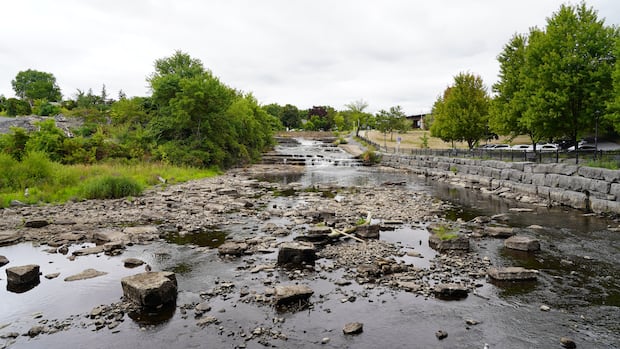OttawaThe Cataraqui Region Conservation Authority says drought conditions in that part of eastern Ontario have improved, dropping from Level 3 — the most severe low-water warning a conservation authority can issue — to Level 2.Cataraqui Region Conservation Authority still asking residents to reduce non-essential water use Mélina Lévesque · CBC News · Posted: Nov 19, 2025 4:20 PM EST | Last Updated: 1 hour agoListen to this articleEstimated 2 minutesThe audio version of this article is generated by text-to-speech, a technology based on artificial intelligence.The waterfall in Napanee’s spingside park experienced abnormally low water levels this summer and fall. (Daniel Taekema/CBC)The Cataraqui Region Conservation Authority says drought conditions in that part of eastern Ontario have improved, dropping from Level 3 — the most severe low-water warning a conservation authority can issue — to Level 2.Level 2 is the second of three low-water conditions, with Level 1 considered minor and Level 3 severe, indicating a failure of the water supply to meet demand. In September, the Cataraqui region was among several under a Level 3 advisory after dry weather conditions dominated much of eastern Ontario over the summer and into the fall. According to the Cataraqui authority, conditions in the area from Napanee east to Brockville and north to Newboro has started to normalize, prompting the downgrade.”The month of October brought with it a normal amount of rainfall across the region, just under 100 mm, which has started to alleviate some of the dry conditions we have been experiencing,” technician Nick Sterling explained in a news release. “Stream flows in some creeks have recovered to within their normal range for this time of year, while others remain lower than normal but are showing signs of a gradual recovery.” Residents still asked to conserveResidents with wells, or who draw water from inland lakes or streams, are still being asked to voluntarily conserve water.Well owners are being encouraged to review the province’s guidance on well water shortages. The conservation authority says precipitation during the first half of November and a “normal forecast” for the rest of the month could see conditions continue to improve in the Cataraqui region. The conservation authority says it will continue to monitor water levels and will provide updates as conditions change. ABOUT THE AUTHORMélina Lévesque is a journalist with CBC News in Ottawa. Her experiences living in Southeast Asia, the Middle East and Canada fuel her passion for storytelling without borders. You can reach her at melina.levesque@cbc.ca
Wednesday, 19 Nov 2025
Canada – The Illusion
Search
Have an existing account?
Sign In
© 2022 Foxiz News Network. Ruby Design Company. All Rights Reserved.
You May also Like
- More News:
- history
- Standing Bear Network
- John Gonzalez
- ᐊᔭᐦᑊ ayahp — It happened
- Creation
- Beneath the Water
- Olympic gold medal
- Jim Thorpe
- type O blood
- the bringer of life
- Raven
- Wás’agi
- NoiseCat
- 'Sugarcane'
- The rivers still sing
- ᑲᓂᐸᐏᐟ ᒪᐢᑿ
- ᐅᑳᐤ okâw — We remember
- ᐊᓂᓈᐯᐃᐧᐣ aninâpêwin — Truth
- This is what it means to be human.
- Nokoma












